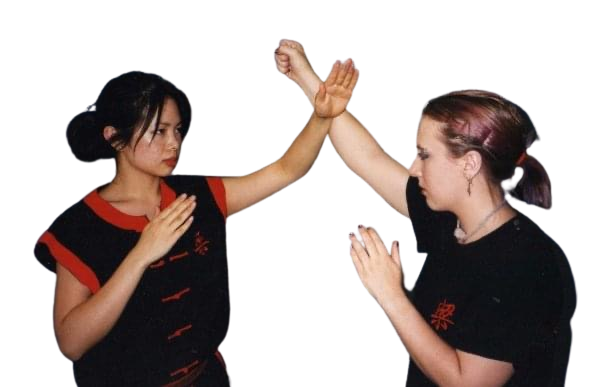Wing Chun Techniques for Women’s Self-Defense: Protecting Against Assault and Violence
By Maurice Novoa a master under the Yuen Kay Shan, Ip Man and Pan Nam lineages.
Introduction:
As an experienced martial arts instructor with over 30 years of practice in Wing Chun Kung Fu, I understand the importance of self-defense, especially for women. In this article, we will explore how techniques can empower women to protect themselves against assault and violence. Whether you are a seasoned martial artist or new to self-defense, the principles and techniques of this martial art can provide you with practical skills to enhance your personal safety.
Understanding the Unique Challenges Faced by Women
Before delving into specific Wing Chun techniques, it is crucial to acknowledge the unique challenges that women may encounter in self-defense situations. Factors such as size and strength differences, social dynamics, and the element of surprise can all impact the effectiveness of a woman’s self-defense response. Wing Chun offers strategies and techniques that leverage the body’s natural mechanics and focus on practicality, making it an ideal martial art for women’s self-defense.
Core Principles of Wing Chun for Self-Defense
1. Simultaneous Attack and Defense:
– Wing Chun emphasizes the concept of simultaneous attack and defense, enabling practitioners to defend themselves while launching counterattacks. This principle allows women to create opportunities to neutralize threats swiftly.
2. Economy of Motion:
– Wing Chun promotes efficient and economical movements, minimizing wasted energy and maximizing the effectiveness of strikes and defensive actions. This aspect is particularly beneficial for women, as it allows them to utilize their strength and agility efficiently.
3. Centerline Control:
– The centerline theory in Wing Chun focuses on controlling the central line of an opponent’s body. By maintaining control of this vital space, women can neutralize attacks and maintain a dominant position, increasing their chances of successfully defending themselves.
Wing Chun Techniques for Women’s Self-Defense
1. Chain Punches:
– The rapid-fire chain punches in Wing Chun are an effective technique for close-quarters combat. Practicing these punches enhances speed and accuracy, allowing women to deliver multiple strikes in quick succession, creating a powerful deterrent against attackers.
2. Tan Sau (Palm-up Block) and Bong Sau (Wing Arm Block):
– These techniques are excellent for deflecting strikes and creating openings for counterattacks. Tan Sau redirects incoming attacks, while Bong Sau sweeps them to the side, enabling women to maintain control of the situation and launch effective counteroffensives.
3. Pak Sau (Slap Block) and Lop Sau (Grabbing Hand Block):
– Pak Sau and Lop Sau techniques are valuable for redirecting and immobilizing an opponent’s attacking limb. These techniques allow women to control the attacker’s movements, providing opportunities for escape or further counterattacks.
4. Chum Kiu (Seeking the Bridge):
– Chum Kiu is an advanced Wing Chun form that focuses on footwork, balance, and bridging the gap between the practitioner and the attacker. Learning and practicing Chum Kiu techniques can enhance a woman’s ability to maneuver, maintain stability, and generate power in self-defense situations.
The Importance of Training and Practice
To effectively utilize Wing Chun techniques for self-defense, consistent training and practice are essential. Regularly attending classes led by qualified instructors and dedicating time to hone your skills will enhance your confidence and proficiency in executing Wing Chun techniques.
Conclusion
In conclusion, Wing Chun techniques provide women with valuable tools for self-defense, empowering them to protect themselves against assault and violence. By embracing the core principles of Wing Chun, such as simultaneous attack and defense, economy of motion, and centerline control, women can develop practical skills that leverage their natural strengths and enhance their personal safety.
It is crucial to recognize that self-defense is not just about physical techniques but also about preparedness, awareness, and mindset. Wing Chun training goes beyond the physical aspect and instills confidence, discipline, and mental resilience. Through regular practice and dedication, women can develop the necessary skills to respond effectively in threatening situations.
Attending classes led by experienced Wing Chun instructors is highly recommended to learn the techniques correctly and receive personalized guidance. In a supportive training environment, women can build their physical strength, improve their coordination, and develop their situational awareness.
Additionally, self-defense is not solely about learning techniques but also about understanding the importance of setting boundaries, trusting instincts, and maintaining personal safety in various environments. Awareness of one’s surroundings and the ability to identify potential threats are critical elements of self-defense.
Remember, self-defense is a lifelong journey. It requires ongoing practice, review, and adaptation to different scenarios. As an experienced martial arts instructor, I encourage women to commit to their training and continuously refine their skills. Confidence and preparedness are essential, but so is the ability to de-escalate situations and seek help when needed.
Ultimately, Wing Chun provides women with practical tools, physical and mental resilience, and the confidence to navigate potentially dangerous situations. By investing time and effort into Wing Chun training, women can cultivate the skills necessary to protect themselves and live with greater peace of mind.
Take the first step in your Wing Chun journey and empower yourself with the knowledge and skills to defend against assault and violence. Together, let’s create a world where women feel safe, empowered, and capable of protecting themselves.

